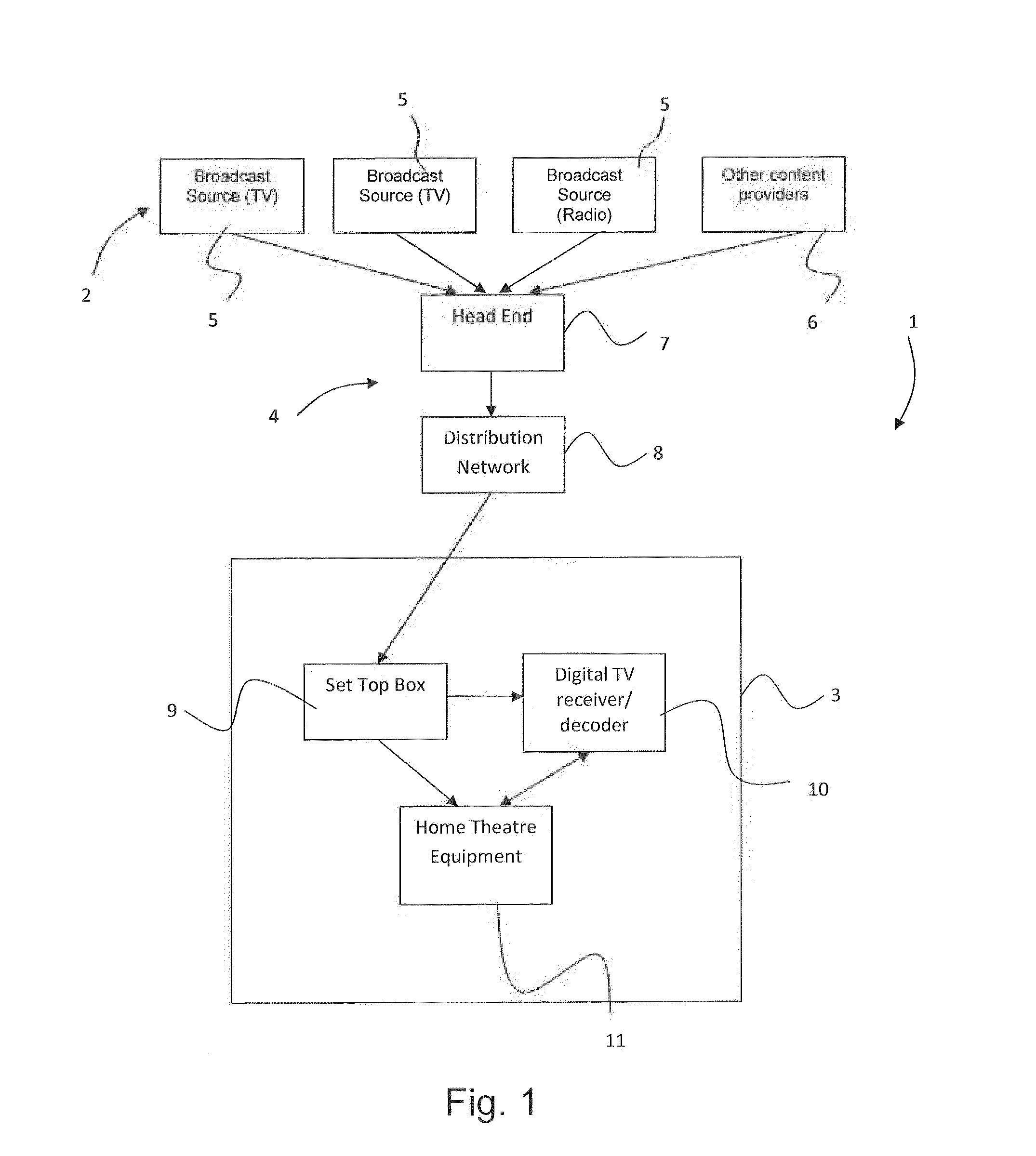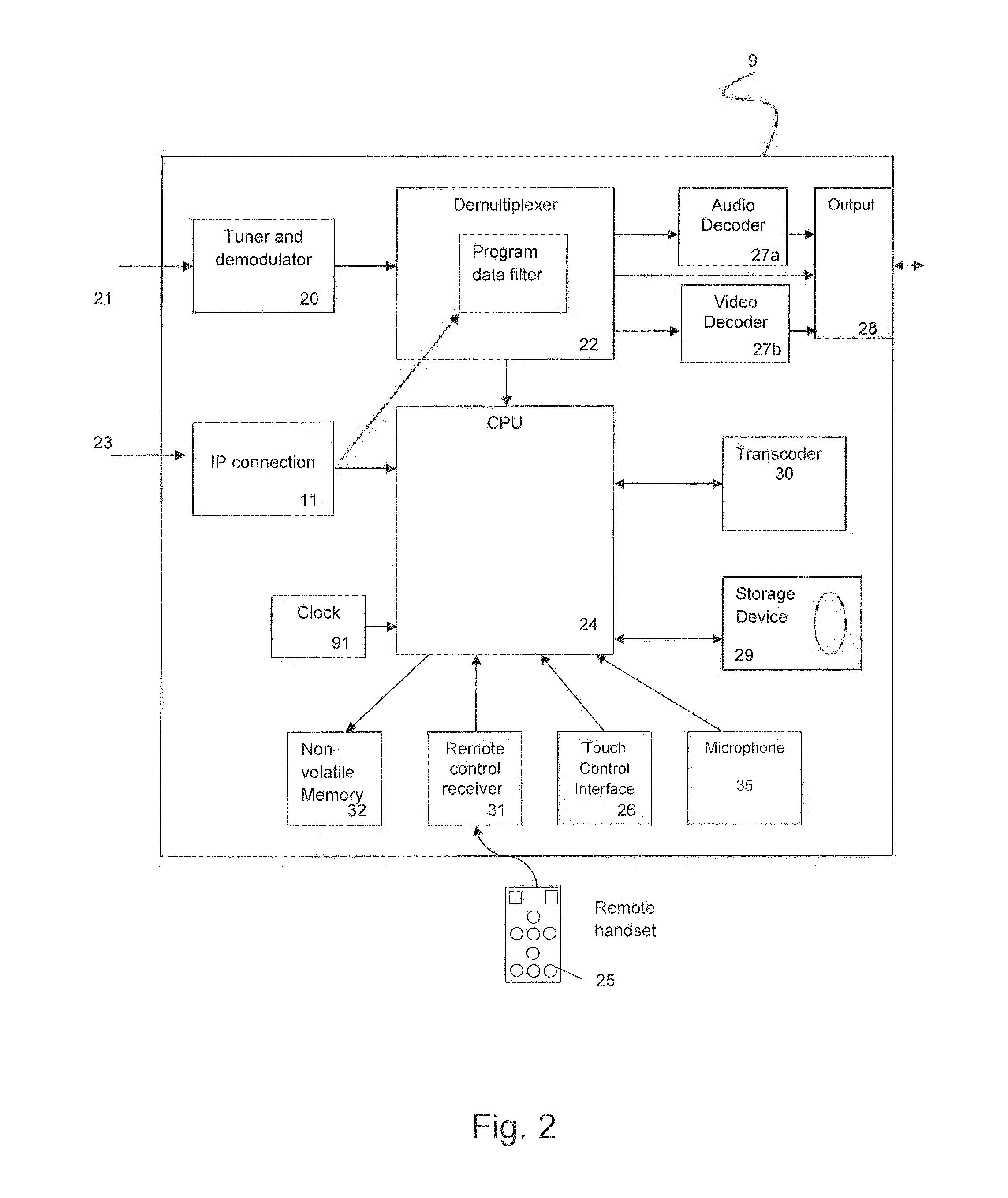Loudness level control for audio reception and decoding equipment
a technology of loudness level control and audio reception, applied in the direction of gain control, sound input/output, instruments, etc., to achieve the effect of saving loudness levels, and ensuring the level of loudness
- Summary
- Abstract
- Description
- Claims
- Application Information
AI Technical Summary
Benefits of technology
Problems solved by technology
Method used
Image
Examples
Embodiment Construction
[0027]Embodiments of the invention will now be described. These relate to methods, apparatus, systems and computer programs for determining the gain (positive or negative) to be applied to a signal output from an audio receiver device, such as an integrated receiver / decoder (IRD) or set top box (STB), or integrated TV, so that on playback via a connected audio playback device, the audio decoded from different transports streams will appear to the listener to be equal in loudness.
[0028]In particular, examples of a computer implemented method and apparatus for performing audio equalisation in an audio receiver device connected to one or more audio playback devices, such as a television unit, computer screen and speakers, amplifier or home theatre equipment will be described. In the examples given, the method and apparatus use an equalisation process which compares audio signals received in different audio formats (e.g. MPEG-1 Layer II, AC-3 2.0, AC-3 5.1 and HE-AAC) with one another, ...
PUM
 Login to View More
Login to View More Abstract
Description
Claims
Application Information
 Login to View More
Login to View More - R&D
- Intellectual Property
- Life Sciences
- Materials
- Tech Scout
- Unparalleled Data Quality
- Higher Quality Content
- 60% Fewer Hallucinations
Browse by: Latest US Patents, China's latest patents, Technical Efficacy Thesaurus, Application Domain, Technology Topic, Popular Technical Reports.
© 2025 PatSnap. All rights reserved.Legal|Privacy policy|Modern Slavery Act Transparency Statement|Sitemap|About US| Contact US: help@patsnap.com



